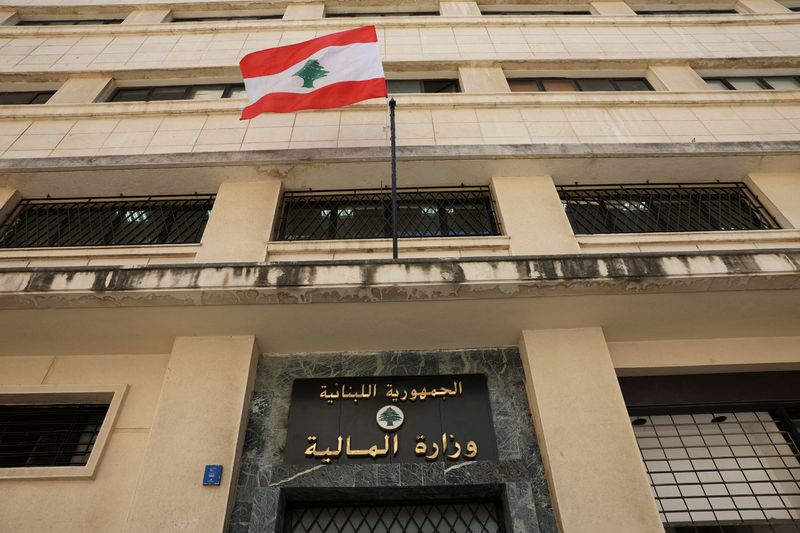Analysis-Lebanon’s distressed debt soars to shaky new heights
By Libby George
LONDON (Reuters) – Lebanon’s defaulted government bonds have nearly quadrupled in price over the past year as investors bet on signs of economic recovery but a wild variance in estimates of their likely worth after a restructuring could restrain any further rally.
A “recovery value” for the bonds will not become clearer until lawmakers decide what level of losses struggling local banks must take, which in turn will inform how much money the government can funnel to bondholders.
The bonds have rallied from just 6 cents on the dollar a year ago to close to 24 cents, following a political shake-up which ended more than two years of government paralysis that had exacerbated Lebanon’s economic crisis.
RISING HOPE – BUT WIDE RANGE OF ‘RECOVERY VALUE’
The formation of a new government in February spurred the gains, with investors hoping authorities would bring the country closer to accessing reconstruction funds after a devastating war between Israel and the Lebanese armed group Hezbollah.
Some fixed income analysts, however, say the rally may be getting ahead of itself given myriad uncertainties, notably on the bonds’ “recovery value”. This figure is what the bonds will be worth after a long-awaited debt restructuring that is essential to revive the economy.
The range of estimated value is disproportionately large.
“One can construct scenarios of recovery in a broad range (of) 20-40 cents,” said Roger Mark, an analyst in the fixed income team at asset manager Ninety One, which holds the bonds.
“Of course, there are also more negative scenarios whereby we don’t get an IMF deal in the coming year at all.”
Hopes that Lebanon can secure an International Monetary Fund bailout to help rebuild rose after the IMF said in June that the country had made progress toward a lending deal. Its staff will visit Beirut this month to advance discussions.
Morgan Stanley, in a note to clients seen by Reuters, said recovery on Lebanon’s bonds could be as much as 40 cents – but also could “fall materially, to around 23-26 cents” in a worse scenario.
A group representing bondholders declined to comment.
GREEN SHOOTS OF PROGRESS
After defaulting on its $31 billion of outstanding international bonds in March 2020, Lebanon’s financial crisis spiralled, wiping out banks’ balance sheets and costing the currency 99% of its value.
The bonds fell below 6 cents as hopes dwindled for a debt restructuring or crucial IMF bailout.
Following parliament’s election of a new president in January, lawmakers passed in July a long-awaited banking sector restructuring law, one of several pieces of legislation needed for financial system reform.


